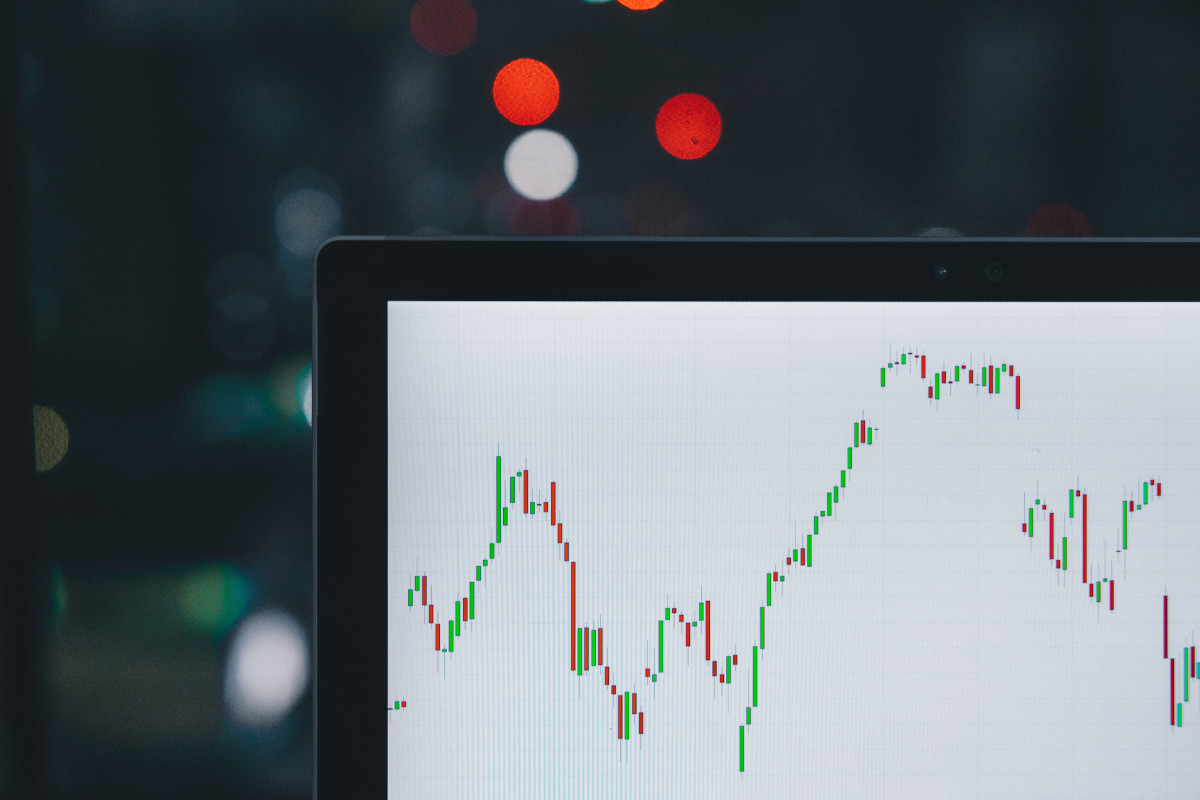There are two ways you can analyze a stock: either through technical analysis or fundamental analysis. Each has its place, and your unique trading strategy probably favors one more than the other.
But perhaps you’re wondering if there’s a way to merge the two methods together for the best of both worlds.
You want to gain insights into a stock’s future price movements through technical analysis along with an assessment of a company’s overall health and value through fundamental analysis. That’s exactly what you’ll learn how to do in this guide, using fundamental and technical analysis together.
We’re not just going to explain how to combine fundamental and technical analysis. You’ll also discover a method of analysis that simplifies both these techniques into a simpler, more effective means of finding opportunities and executing your trades to perfection.
Before we get into that, though, let’s start with the basics of combining fundamental and technical analysis.
A Brief Introduction to Fundamental and Technical Analysis
To illustrate the value of merging the principles of fundamental and technical analysis we want to first define each of these separately. This will help provide context as we guide you through how to combine fundamental and technical analysis together.
What is Fundamental Analysis?
First things first, what is fundamental analysis? This assesses the intrinsic value of a company, looking beyond the stock price. This approach evaluates a variety of factors like the company’s earnings, dividends, future growth prospects, and overall financial health.
Analysts often scour through annual reports, income statements, balance sheets, and cash flow statements to understand a firm’s financial posture.
The idea here is simple: if the intrinsic value is estimated to be higher than the current market price, it could be a buying opportunity. Conversely, if it’s lower, the stock might be overvalued.
This form of analysis is particularly important for those who are interested in the long-term prospects of a company. It’s typically used by those retiring on dividends or trying to figure out where to put retirement money after retirement.
What is Technical Analysis?
Let’s get into the other half of this conversation. What is technical analysis? It’s rooted in the belief that all relevant information is already reflected in a stock’s price. But does technical analysis work? When done correctly it sure does!
It’s all about spotting trading patterns and trends in stock price movements and trading volumes. Investors try to predict future stock movements by analyzing historical data, like price charts and various other chart patterns.
This method doesn’t concern itself with the company’s financial health or market fundamentals. Instead, it relies on tools such as technical trading indicators, moving averages, resistance levels, and oscillators to gauge market sentiment and forecast where the stock might be headed next.
Those who use these tactics are typically trying to capitalize on a temporary swing in a stock’s price – whether negative or positive. Think day traders or swing traders, scalpers, trend traders, etc.
The Benefits of Using Fundamental and Technical Analysis Together
Before we explain how to combine fundamental and technical analysis together, why should you bother? Technical and fundamental analysis serve important purposes on their own. But what are the benefits of using fundamental and technical analysis together?
Gaining a Holistic View of Stock Potential
Investors obtain a 360-degree perspective of a stock by integrating both fundamental and technical analysis.
While fundamental analysis offers insights into a company’s financial health and intrinsic value, technical analysis provides a snapshot of market sentiment and potential price movement trends.
This combination offers a comprehensive picture, allowing investors to make decisions that factor in both the company’s underlying health and the market’s current dynamics.
Predicting Both Short-term Movements and Long-term Value
Technical analysis highlights potential short-term stock price movements, making it a favorite among day traders and short-term investors.
On the other hand, fundamental analysis reveals a company’s long-term value proposition, a perspective often sought by value investors and long-term stakeholders.
You’re essentially equipping yourself with a dual lens deploying both techniques, prepared to spot both immediate opportunities and long-term investments.
Mitigating the Weaknesses of Each Analysis Type
No single analytical method is without its pitfalls. Fundamental analysis might be less responsive to sudden market changes, while technical analysis can sometimes miss broader economic or industry shifts.
However, the strengths of one can help counterbalance the weaknesses of the other by using fundamental and technical analysis together.
This synergy ensures a more balanced and resilient investment approach, buffering against potential blind spots that might arise when relying solely on one analysis method.
Are Both Fundamental and Technical Analysis Necessary for Your Trading Strategy, Though?
We want to be transparent in helping you set your expectations. Implementing either fundamental or technical analysis as you assess an opportunity and execute your trade is time-consuming.
But combining fundamental and technical analysis together essentially doubles the work.
That being said, is it necessary – or is it overkill?
Recognizing the Dependence on Your Investment Horizon
Your investment horizon, or the time frame in which you plan to hold onto an investment, plays a crucial role in determining the importance of each analysis type.
Technical analysis often takes precedence due to its focus on immediate price trends and market sentiment for short-term traders looking to capitalize on quick market movements.
However, understanding a company’s intrinsic value and growth potential through fundamental analysis becomes increasingly pivotal for those with a longer investment horizon.
Nevertheless, integrating insights from both techniques can enhance the robustness of your decisions irrespective of your horizon. You’ll just have to prepare for a few challenges along the way.
Overcoming the Challenges of Combining Both Analyses
While there’s no denying the enhanced perspective that comes from using both fundamental and technical analysis, merging the two is not without its challenges. The sheer volume of data to be analyzed from both disciplines can be overwhelming, especially for individual investors.
Fundamental analysis requires a deep dive into financial statements, earnings calls, and broader market news, while technical analysis demands a meticulous assessment of price charts, indicators, and patterns.
This intensive process can be time-consuming and requires a fair bit of expertise to execute accurately. Not to mention, at times, the two analyses might offer conflicting signals, creating dilemmas in decision-making.
Hence, while combining both offers a more enriched viewpoint, it undoubtedly demands a higher commitment in terms of time and effort.
The good news is that in just a few moments we’ll introduce you to a system that saves you from having to spend hours in front of your screen conducting either form of analysis.
Instead, you’re given all the insights you need to make clear, calculated investment decisions at a glance – freeing you up to spend less time toiling over analysis and more time watching your portfolio grow.
First, though, we’ll walk you through how to use both technical and fundamental analysis.
How to Combine Fundamental and Technical Analysis Together
Blending the strengths of both fundamental and technical analysis together can be a game-changer. So, here is how to combine fundamental and technical analysis together to get the best of both worlds in your trading strategy.
Starting with the Macro (Fundamental) and Narrowing Down to Micro (Technical)
In our experience you’ll have greater success by beginning your analysis with a bird’s-eye view of a company’s financial health and industry position. Fundamental analysis provides this broader perspective by evaluating company-specific factors such as earnings, valuation, and industry competition.
Once you’ve shortlisted stocks based on these criteria, dive deeper with technical analysis. This will help you identify ideal entry and exit points, market sentiment, and potential short-term price movements.
Essentially, while fundamental analysis tells you which stocks to buy, technical analysis can guide you on when to make that purchase.
Our guides on how to pick a stock, when to buy stocks, and when to sell stocks for profit are worth a read as you learn more about how to combine fundamental and technical analysis together.
We also have resources on how to do technical analysis of stocks and how to do fundamental analysis of stocks to help you master the basics before attempting to merge the two strategies.
But, let’s look at some tools and platforms that will make combining fundamental and technical analysis a whole lot easier for now.
Tools and Platforms that Facilitate Combined Analysis
The best swing trading platform can make all the difference for those keen on using fundamental and technical analysis together. Here’s what to keep in mind when selecting the ideal tool:
- Integrated Dashboards: Choose a platform that provides an all-in-one dashboard. This ensures you can simultaneously view a company’s financial metrics alongside its stock price movements and patterns.
- Customizable Filters: You should be able to filter stocks based on criteria you deem essential, be it certain fundamental metrics or technical patterns. This customization can streamline your stock selection process.
- Real-time Data and Alerts: Real-time information is vital. Platforms that offer instant data updates and allow you to set alerts for specific price movements or financial metric thresholds can be invaluable in staying ahead of trends.
- Historical Data Access: While current data is crucial, the ability to look back at historical financial metrics and stock patterns can provide context and a better understanding of a stock’s potential trajectory.
We’ll introduce you to a system that does all this and more in just a moment – so stay tuned!
Best Practices for Interpreting Combined Data
As we draw this guide on how to combine fundamental and technical analysis to a close we want to leave you with a few best practices to keep in mind:
- Stay Updated: It’s crucial to keep abreast of current events in the volatile nature of the stock market. These can impact a company’s fundamentals and, subsequently, its stock price.
- Avoid Confirmation Bias: Don’t rely solely on data that supports your existing beliefs. If both your fundamental and technical analyses don’t align, it might be time to reconsider your position.
- Be Adaptable: Market conditions change sometimes, and what worked in the past might not be effective in the present. Continuously refine your approach and be open to adapting based on new data.
- Seek Consistency, Not Perfection: It’s essential to understand that no strategy guarantees success 100% of the time. Focus on creating a consistent approach, and with time, your investment decisions will be more informed and precise.
There you have it – how to combine fundamental and technical analysis together! But, what if there was an easier way to analyze opportunities and win more trades with less work? It’s time we introduced you to a transformative approach to investing in VectorVest…
Save Time While Winning More Trades By Using VectorVest for Analysis
There’s no questioning the value of combining fundamental and technical analysis together. The issue is that very few investors can justify the time commitment to use both together as part of your strategy.
That being said, VectorVest is the best way to get a sense of both the fundamentals behind a company and its true value while remaining attuned to trends and timing.
It’s the best stock analysis app for beginners and seasoned traders alike, saving you time while empowering you to win more trades with less work. But how does it all work? You’ll just rely on three simple ratings.
Relative value (RV) and relative safety (RS) give you a detailed look at the fundamental side of a company. For example, the RV rating compares a stock’s long-term price appreciation potential to AAA corporate bond rates and risk. Meanwhile, the RS rating is based on a company’s financial consistency & predictability, debt-to-equity ratio, and business longevity.
The relative timing (RT), resting, on the other, gives you detailed insights into a stock’s price trend. It helps you determine if a stock is rising or falling price to help you time your entry and exit to perfection. It’s based on the direction, dynamics, and magnitude of the stock’s price movement.
These three simple ratings sit on their own scales of 0.00-2.00, with 1.00 being the average. They also contribute to an overall VST rating, which is accompanied by a clear buy, sell, or hold recommendation.
We encourage you to see the system in action through a free stock analysis today. Then, get set up with our mobile stock advisory or desktop stock forecasting software and transform your approach to analysis for the better!
Bringing Our Conversation on Combining Fundamental and Technical Analysis Together to a Close
Marrying the depth of fundamental analysis with the immediacy of technical signals can be transformative for any trader or investor. You’re not just making informed decisions by doing so – you’re making the best decisions with the full picture in mind.
Learn more in our blog with guides on when to cut losses, how to buy the dip, how to find stocks to swing trade, what to do during a stock market crash recession, tips on investing in a down market, how to uncover the best beginner stocks, and more.
Otherwise, take what you’ve learned in this guide on how to combine fundamental and technical analysis and put it to the test. Or, better yet, see firsthand what VectorVest can do to streamline your trading strategy and help you earn more profits with fewer headaches!








Leave A Comment